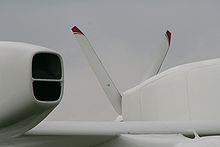
The ADI Stallion is a US civil utility aircraft that first flew in July 1994. It is marketed in kit form for homebuilding by Aircraft Designs Inc.

Einar K. Enevoldson was the director of the Perlan Project. He was a civilian research pilot for NASA's Hugh L. Dryden Flight Research Center, Edwards, California, from 1968 until 1986. He was involved in many research programs, including those with experimental wings, propulsion and digital computer flight control systems.
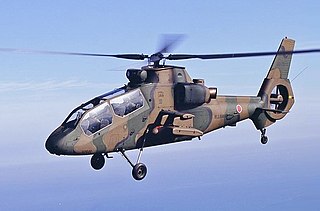
The Kawasaki OH-1 is a military scout/observation helicopter developed and manufactured by the Kawasaki Aerospace Company. The primary operator is the Japan Ground Self-Defense Force (JGSDF), who originally procured the OH-1 as a domestically produced successor to their existing OH-6D Loach fleet. The OH-1 has the distinction of being the first helicopter to be entirely produced in Japan.

Grob Aircraft, formerly Grob Aerospace, is a German aircraft manufacturer, specialising in gliders and general aviation.

The PZL 130 Orlik is a Polish turboprop, single engine, two seat trainer aircraft.
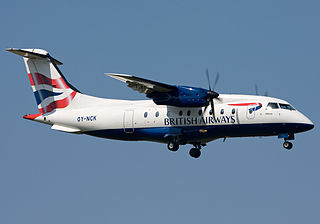
The Dornier 328 is a turboprop-powered commuter airliner. Initially produced by Dornier Luftfahrt GmbH, the firm was acquired in 1996 by Fairchild Aircraft. The resulting firm, named Fairchild-Dornier, manufactured the 328 family in Oberpfaffenhofen, Germany, conducted sales from San Antonio, Texas, United States, and supported the product line from both locations. A jet-powered version of the aircraft, the Fairchild Dornier 328JET, was also produced.

This listing of flight altitude records are the records set for the highest aeronautical flights conducted in the atmosphere, set since the age of ballooning.

The Gavilán 358 is a Colombian light utility transport aircraft of the 1990s. A high-winged monoplane powered by a piston engine, small numbers of Gaviláns were produced in the late 1990s/early 2000s, some serving with the Colombian Air Force.

The HAL HPT-32 Deepak is an Indian prop-driven primary trainer manufactured by Hindustan Aeronautics Limited. It has two seats in side-by-side configuration.
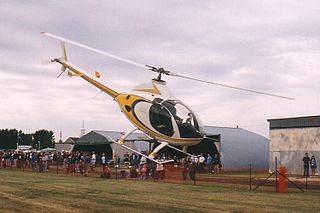
The RotorWay Exec is a family of American two-bladed, skid-equipped, two-seat kit helicopters, manufactured by RotorWay International of Chandler, Arizona and supplied in kit form for amateur-construction.

The Caproni Ca.161 was an aircraft built in Italy in 1936, in an attempt to set a new world altitude record. It was a conventional biplane with two-bay, staggered wings of equal span, based on Caproni's Ca.113 design. The pressure-suited pilot was accommodated in an open cockpit.
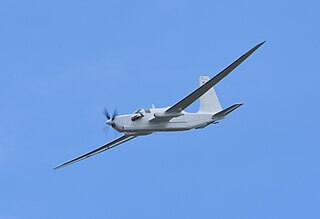
The Grob G 520 is a turboprop long-endurance, high-altitude reconnaissance and surveillance aircraft built by Grob Aircraft with short runway capabilities and full approval for all-weather IFR/icing operations according to LBA/FAA Part 23 regulations. Developed and certified in 1991, the Grob G 520 is one of the world's largest fully composite manned aircraft and holder of several world records. Production was resumed in 2014.
The Yakovlev Yak-58 is a small, multi-role utility transport and business aircraft. The aircraft features a pusher engine and twin boom tail. It saw limited production in the late 1990s.
The Ilyushin Il-106 was a proposed 1990s Russian heavy military transport to replace the Il-76. It would have been a four-engined high-wing cantilever monoplane with a large 34 m cabin.
The Korean Air Chang-Gong 91 is a four-seat single-engined low-wing monoplane designed by the Korea Institute of Aeronautical Technology and built by the Aerospace Division of Korean Air.
The Hongdu N-5,, originally known as the Nanchang N-5, is a Chinese agricultural aircraft. First flown in 1989, and entering into production in 1992, the N-5 is a single-engined low-wing monoplane, and is available in versions powered by a piston engine or a turboprop.
The Terzi T30 Katana is an Italian single-seat competition aerobatic monoplane designed by the Milanese aeronautical engineer Pietro Terzi. Terzi built a limited series with his firm Terzi Aerodyne based in Milan, Italy.

The Krunichev T-411 Aist is a Russian light utility monoplane designed by the Russian company Aeroprogress and placed into production by the Khrunichev State Research and Production Space Center. A version is marketed in the United States as the Aeroprogress T-411 Wolverine powered by a Continental TSIO-550-B.
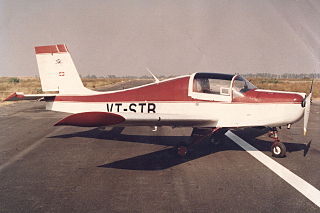
The Bharat Swati is an Indian two-seat training monoplane designed by the Technical Centre of the Directorate General of Civil Aviation and built by Bharat Heavy Electricals Limited.
The Mirage Celerity is an American two-seat cabin monoplane designed by Larry Burton and with plans for home building sold by Mirage Aircraft of Tucson AZ, United States.

